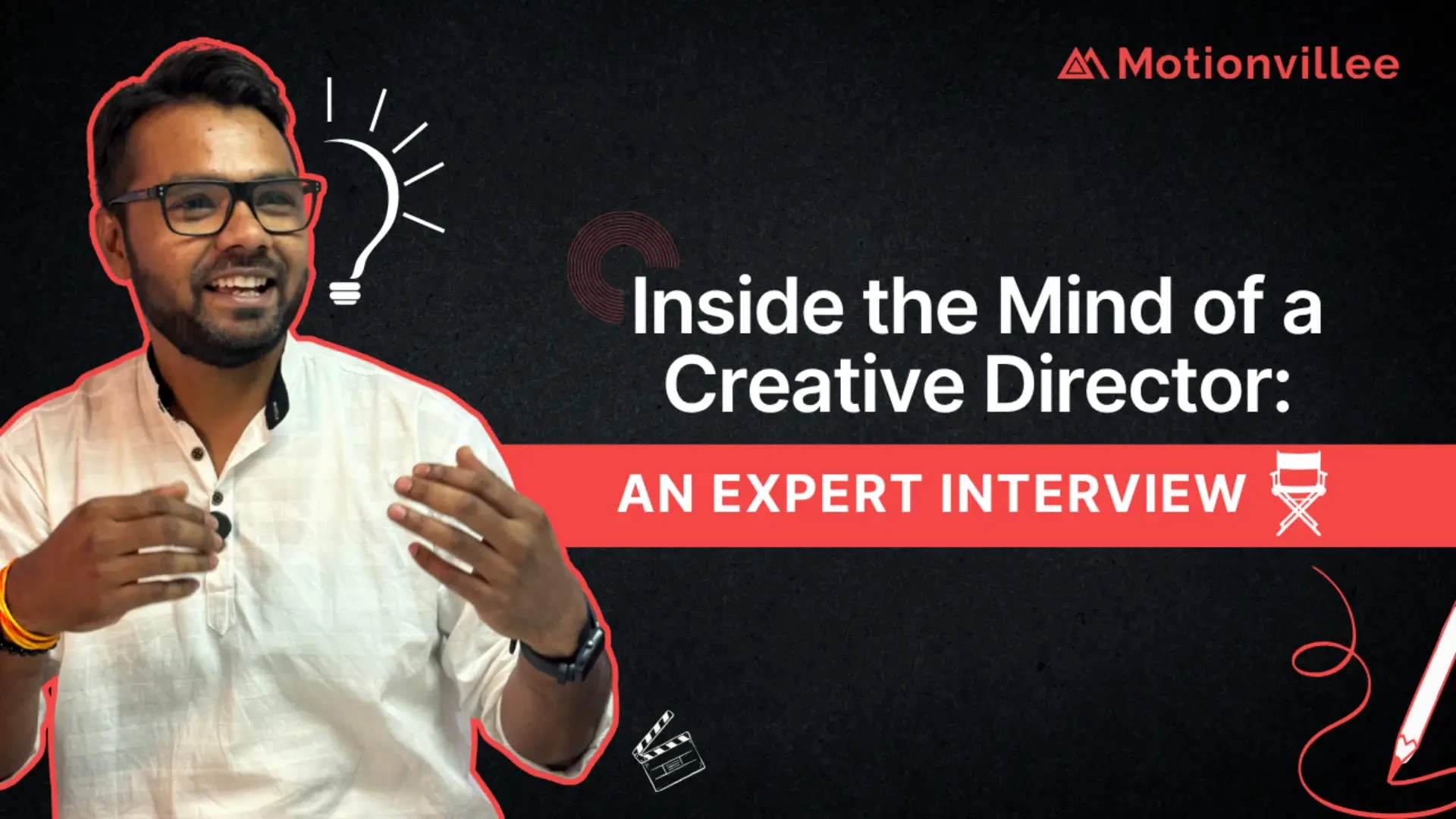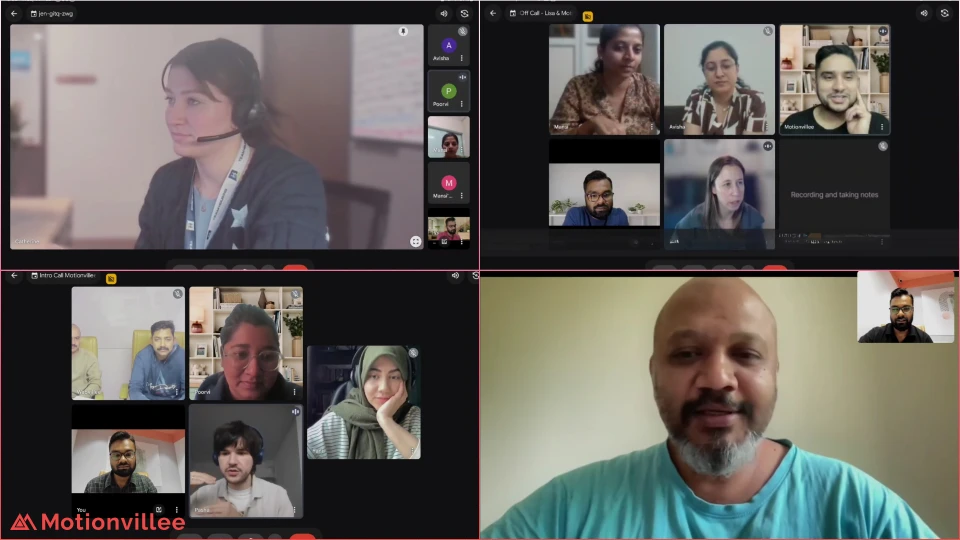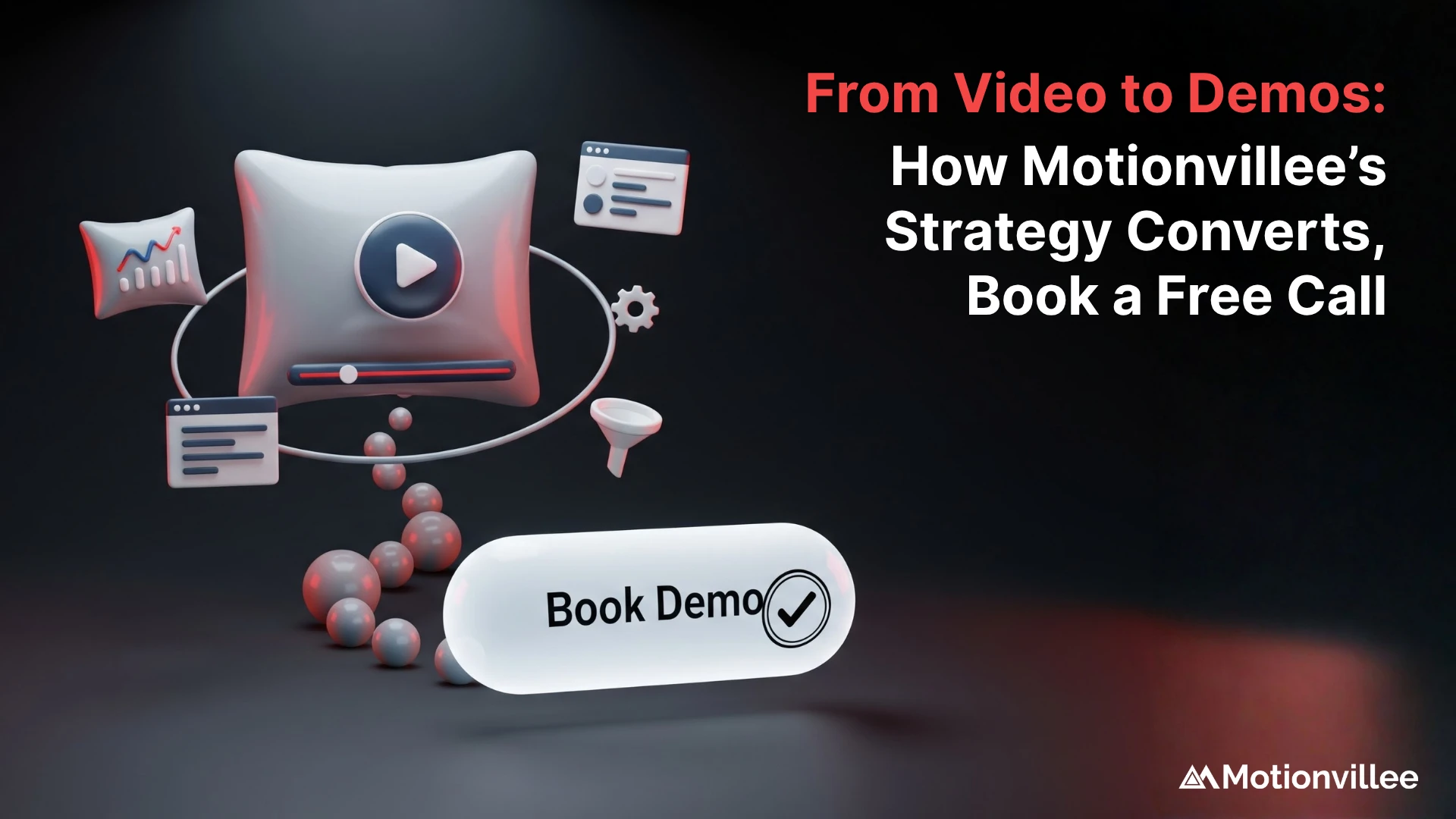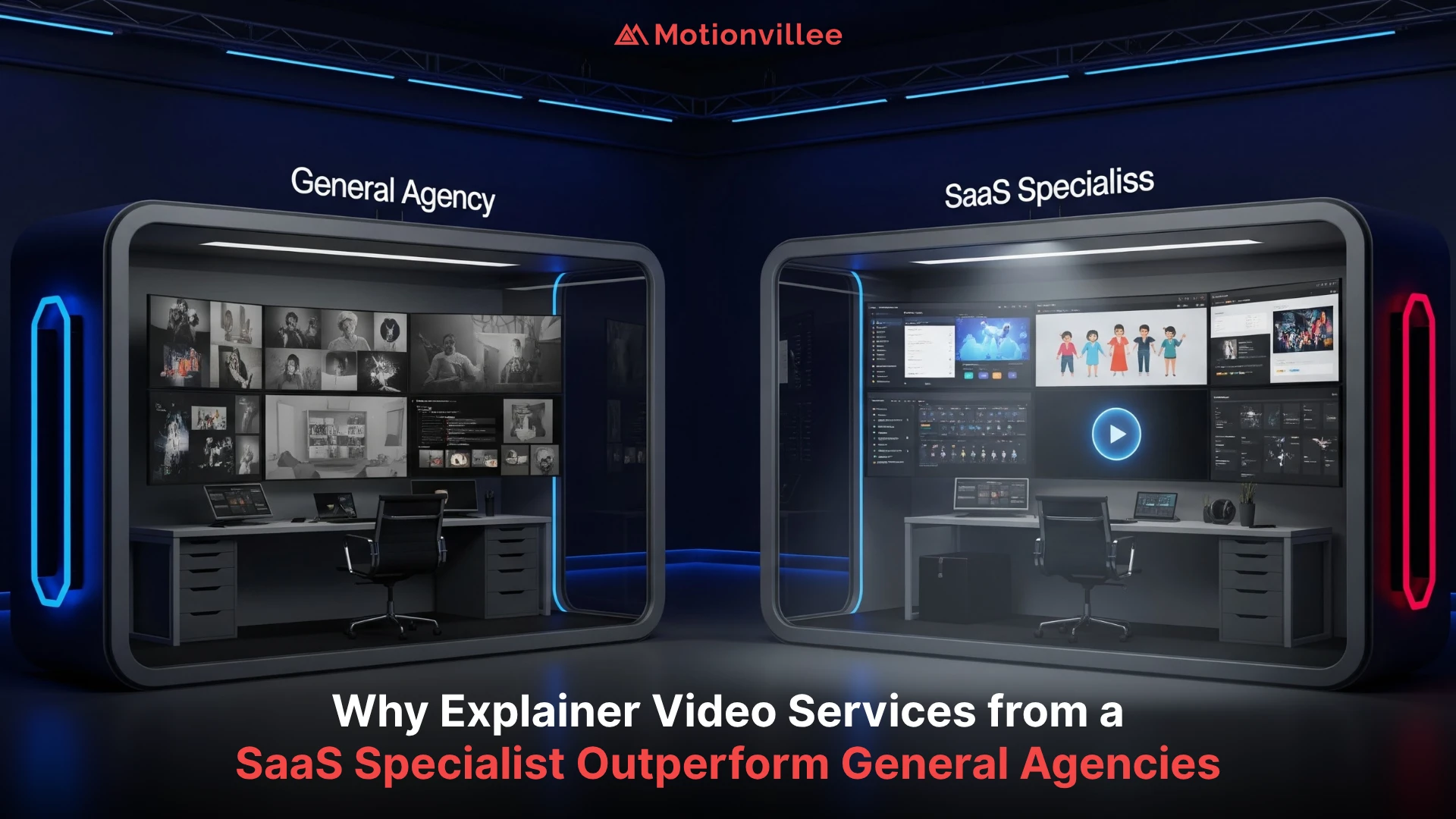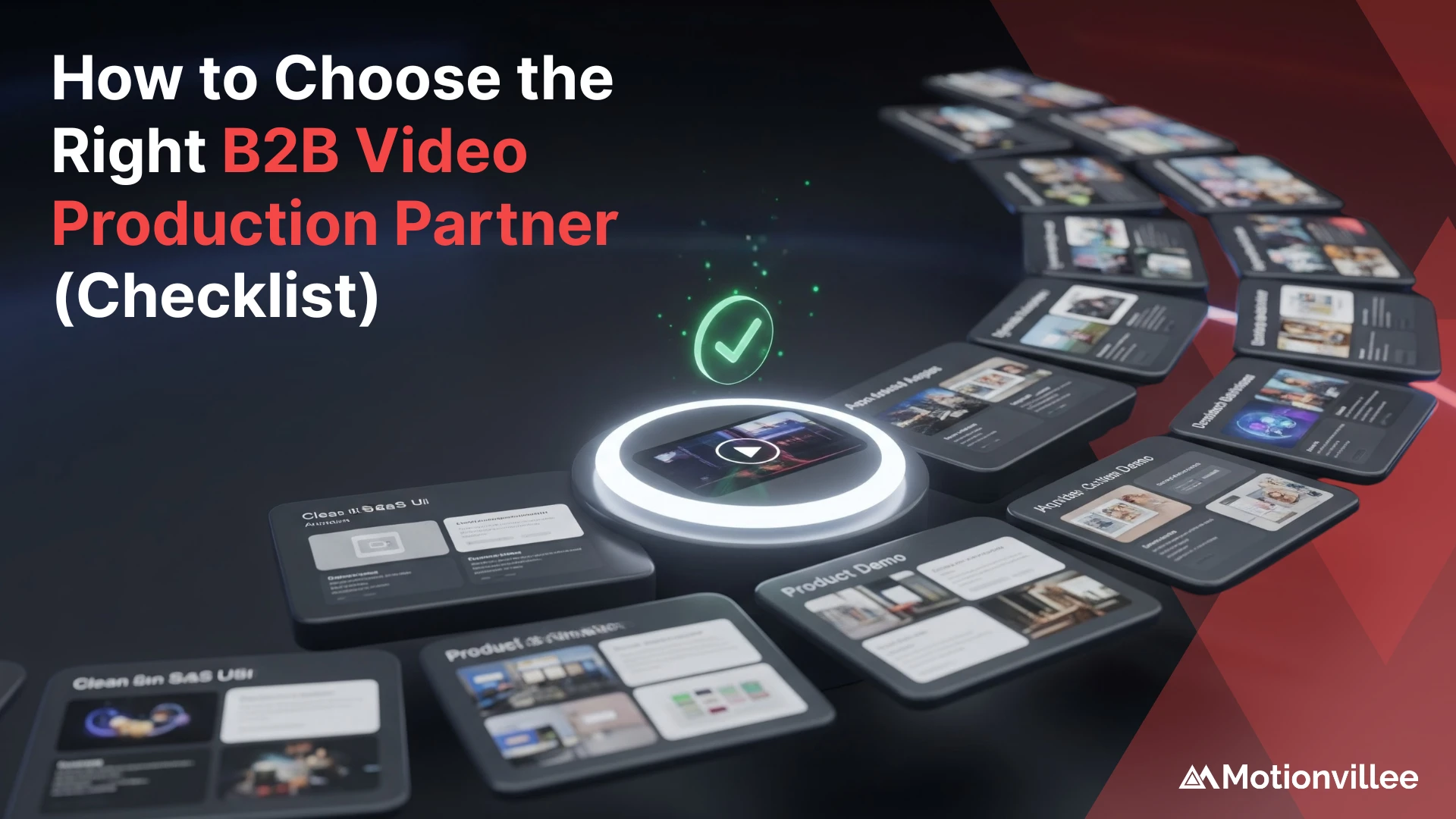Turning Creativity into Clarity
In this video creative director interview, we explore how Motionvillee transforms client ideas into powerful video content through a structured 5-stage video production process. At Motionvillee, we created this content series to showcase our approach and how we execute every project from idea to delivery. Each stage represents a key step in transforming a client’s vision into an effective video story.
In this first stage, we hear from Nilesh, Motionvillee’s Creative Director, who leads the foundation of every project. His role as a video creative director begins where ideas are born, understanding the client’s goals, defining the creative direction, and shaping the narrative that sets the entire project in motion.
In this conversation, Nilesh shares how Motionvillee approaches each project, from identifying client objectives to designing visuals that make the complex simple and the strategic emotional.
What does creativity mean to you?
“Creativity is not about being artistic for art’s sake. It is about simplifying complex ideas beautifully and effectively.”
Defining creativity, Nilesh says, is not easy because almost anything done differently can be called creative. But for him, creativity is about strategic imagination.
At Motionvillee, that means using design and storytelling to solve business problems. It is about turning a client’s complex idea into something real, functional, and emotionally engaging. True creativity, he explains, lies in finding the clearest and most effective way to communicate a message that drives action.
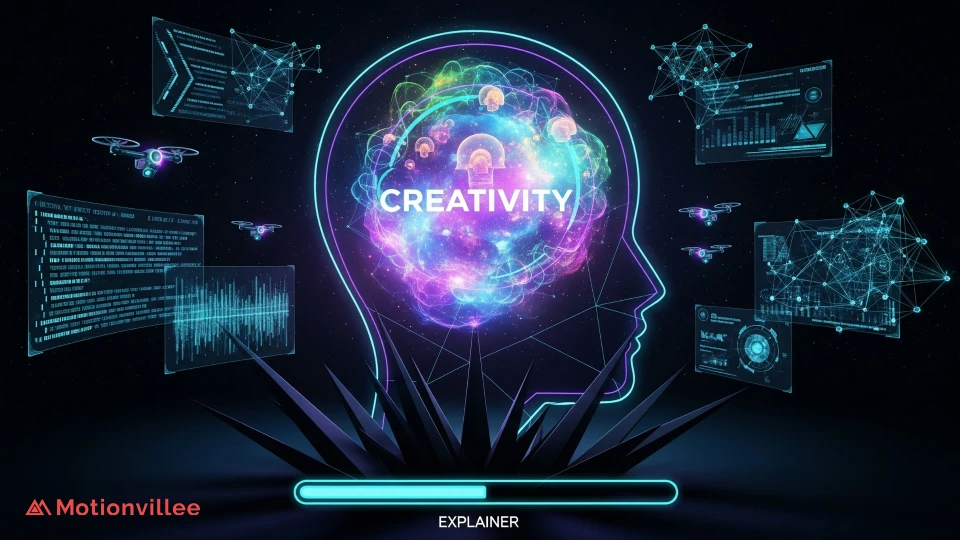
How do you turn client goals into a clear brief?
“Before we start designing or animating, we make sure we understand what problem the client is actually trying to solve.”
Every project begins with listening. When a client approaches Motionvillee, Nilesh and his team focus on clarity before creativity. This creative director workflow starts with understanding the core business challenge.
He starts by asking three essential questions:
- What business problem are we solving?
- Who needs to see this message?
- What do we want them to do after watching?
From this foundation, he identifies key metrics such as lead generation, product adoption, or brand awareness. Once the goals are clear, the team recommends the most effective video format and tone.
“The brief becomes our roadmap,” Nilesh explains. “It connects the client’s business intent with our creative execution.”
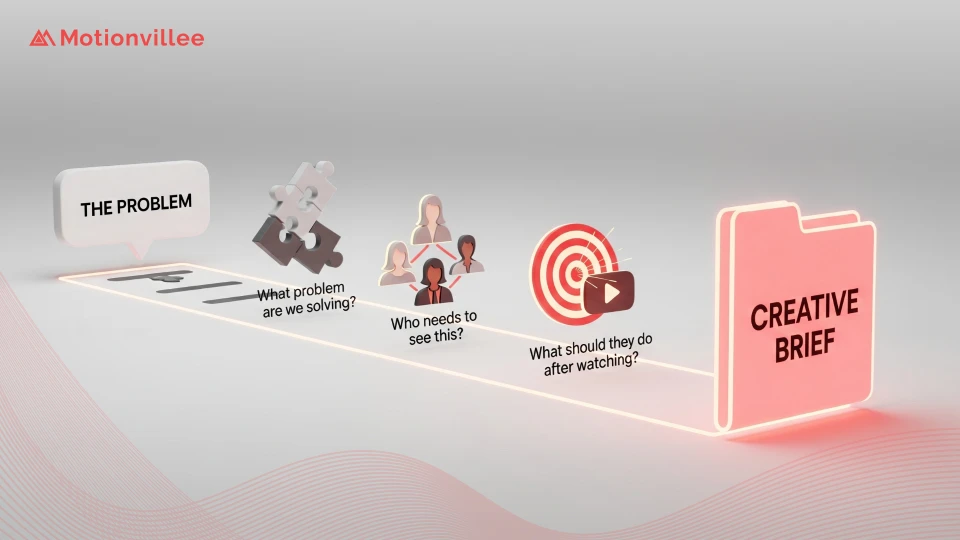
How do you uncover what clients really need?
“Clients often come with solutions instead of problems. Our job is to decode what they actually need.”
Nilesh admits that this is one of the most important and challenging parts of the creative process. Clients often ask for a type of video, like an explainer video or brand film, when what they really need is a way to solve a deeper business challenge.
“I listen carefully to what clients say, but I also listen for what they do not say,” he explains. “They might describe a symptom, but we focus on identifying the core problem.”
He asks questions about audience pain points, competition, and previous campaigns to uncover the real objective. Once the bigger picture is clear, the team reframes the solution to make sure it truly addresses the client’s needs.
How do you approach a new project?
“Every project begins with understanding the client’s goal and ends with delivering a story that feels right for their audience.”
Once the creative direction is established, Nilesh focuses on shaping the entire experience from concept to visual execution. This video storytelling process demands its own unique rhythm and creative logic for every project.
“The first step is to align with the client’s objective,” he says. “We define what success means for them, whether it is awareness, engagement, or conversions. Once we know that, we start building a story that emotionally connects with the target audience.”
He studies the brand’s tone, visual personality, and audience mindset to decide what kind of storytelling will work best. For corporate clients, that might mean a clean, professional flow that emphasizes trust and credibility. For startups or younger brands, it could mean a faster-paced, energetic approach that highlights innovation and movement.
Nilesh also considers the platform and viewing context, whether the project will live on social media, websites, or presentations. “Every creative decision must support the message,” he explains.
“The project should never just look beautiful. It should make sense, feel right, and serve a purpose.”
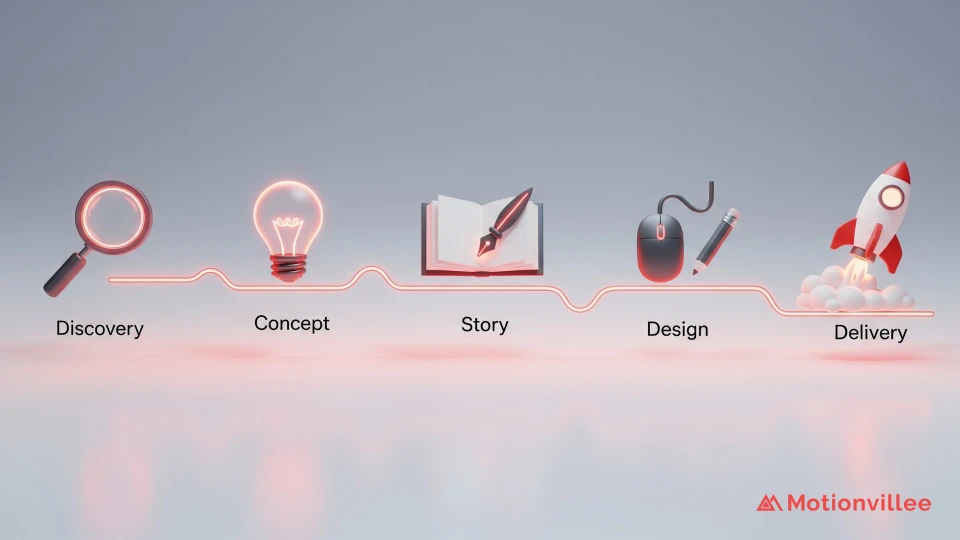
What turns a good idea into a great one?
“A good idea communicates clearly. A great idea makes the complex feel simple and the expected feel fresh.”
In Nilesh’s view, great ideas come from clarity. “A video should be easy for the audience to understand and remember,” he says.
For him, great work balances art and utility. The Motionvillee team first ensures the message is clear and valuable, then refines the visuals to make them engaging.
“Every element should serve the story,” he says. “A beautiful video with a confusing message does not serve its purpose, but a simple, clear one always does.”
He believes a great idea has specificity and restraint. It speaks to a precise audience and focuses only on what matters most. If someone can describe your video’s core idea in one sentence weeks later, that is when you know it worked.
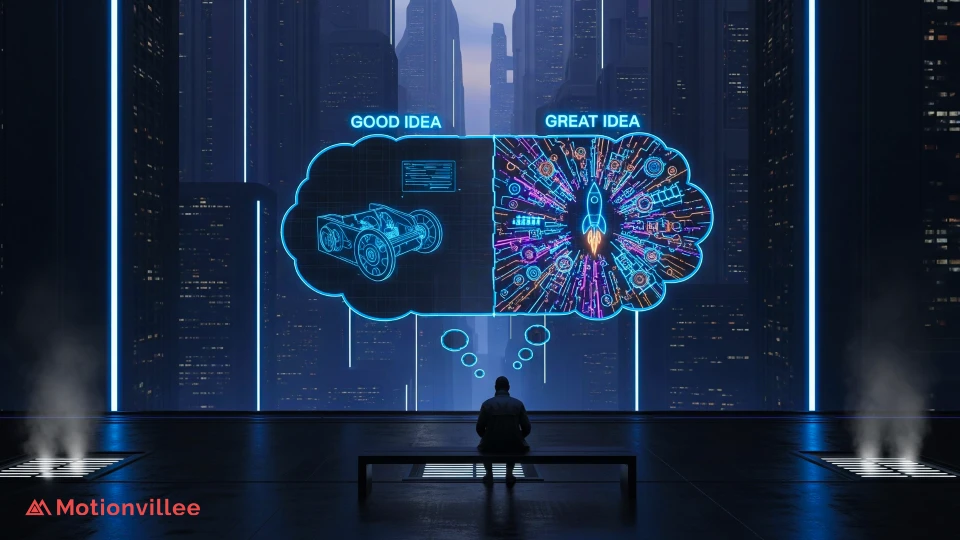
How do you stay creative under tight deadlines?
“Even solving problems within tight deadlines is a form of creativity.”
Like most creative leaders, Nilesh has learned to balance imagination with deadlines. “Tight timelines can be tough, but they also push us to think faster and smarter,” he says.
He prioritizes tasks based on impact, focusing on the elements that drive the message and engagement. Frameworks such as the problem-agitate-solve structure help him organize ideas efficiently. He also keeps a library of concepts and references that can be adapted to new briefs.
“Collaboration is key,” he adds. “Quick brainstorms with the team often generate stronger ideas than solo work.”
His rule of thumb is simple: make decisions quickly and commit. “A very good idea executed on time beats a perfect one delivered late.”
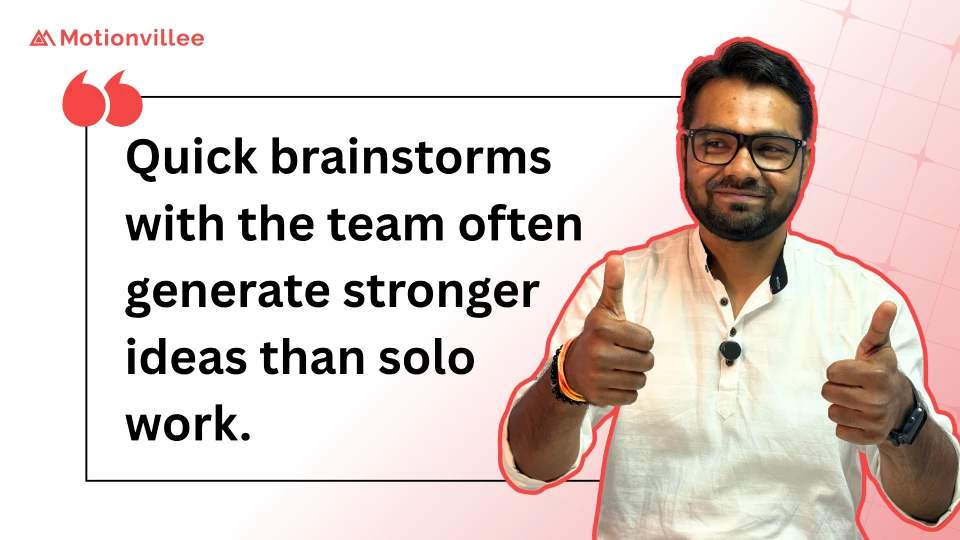
The Creative Director’s Perspective on Video Production
For Nilesh, creative director responsibilities at Motionvillee go beyond random inspiration. It is a structured process that begins with understanding, grows through collaboration, and ends with clarity.
“Our work combines imagination and intention,” he says. “Every decision, from script to motion, is guided by one question: how can we make this story clearer, simpler, and more human?”
Through this approach, Nilesh ensures that Motionvillee’s first stage, creative direction and concept development, lays the foundation for the rest of the video production process. Each idea starts with empathy and ends with impact, proving that creativity works best when it is rooted in strategy and guided by purpose.
About the Creative Director
Nilesh is the Creative Director at Motionvillee with 14 years of experience in the video production industry, including 11 years leading creative vision at Motionvillee. He holds a Diploma in Animation, a Bachelor’s degree in Fine Arts, and a Bachelor’s degree in Science. Nilesh has earned professional certifications in Web Designing and from DesignLab, specializing in transforming complex business ideas into clear, compelling visual stories through explainer videos and animated content.


